Lawrence Livermore National Laboratory (LLNL) scientists recently received and will analyze samples from the asteroid Bennu that will help explain how it formed and where it came from.
Tag: Stars
First-of-Its-Kind Detection Made in Striking New Webb Image
Some of the greatest, and most interesting, astronomical discoveries have come as a surprise to researchers, even when examining the most well-studied areas of the sky.
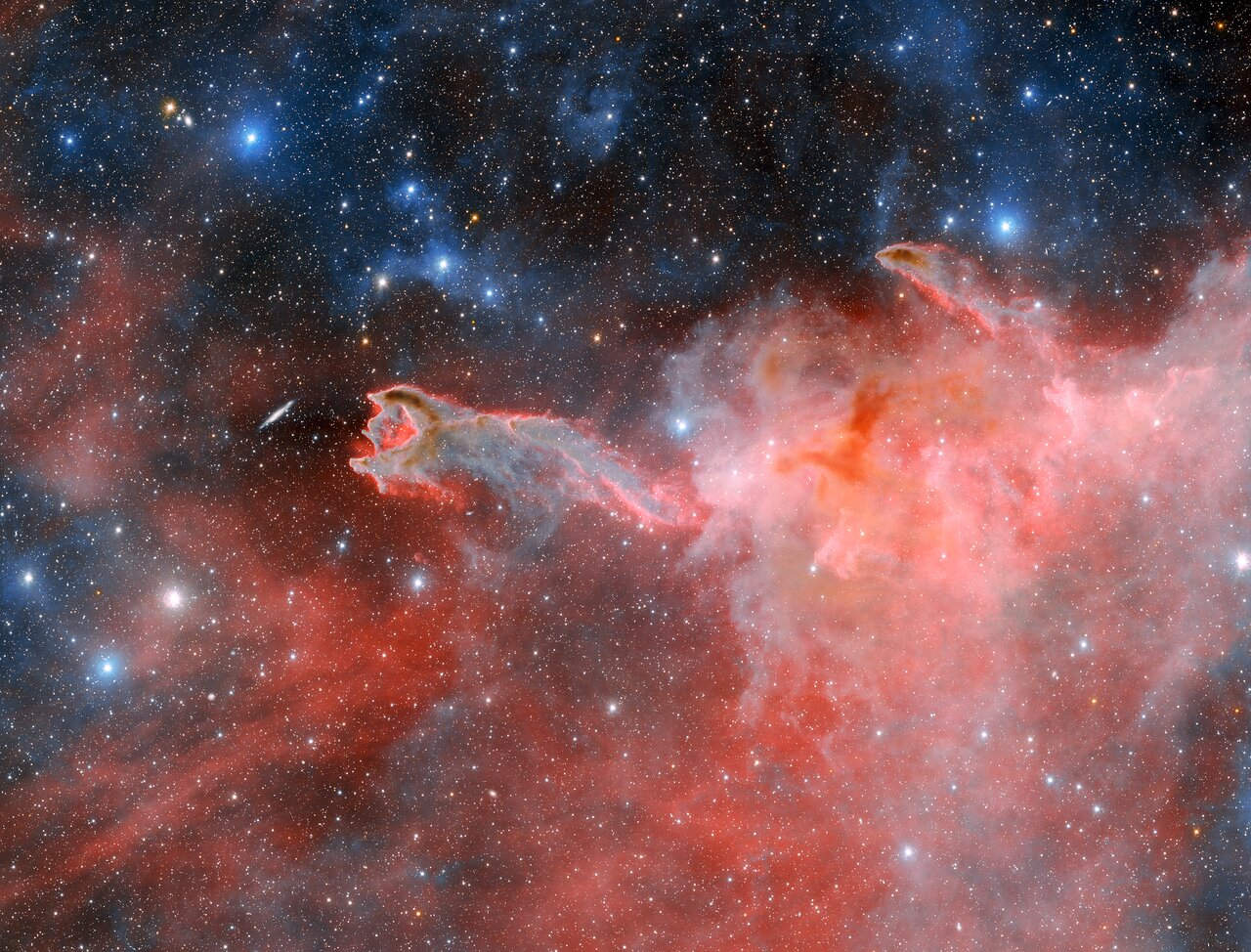
Dark Energy Camera Spies Cometary Globule Reaching for the Stars
The dark, dusty cometary globule known as CG 4 is spotlighted in this image from the Department of Energy-fabricated Dark Energy Camera mounted on the U.S. National Science Foundation Víctor M. Blanco 4-meter Telescope at Cerro Tololo Inter-American Observatory, a Program of NSF NOIRLab.
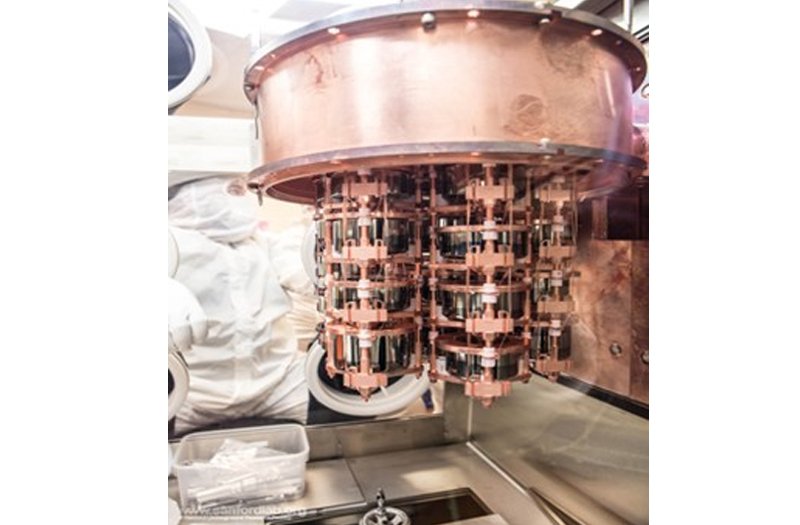
Expanding the Hunt for Hidden Dark Matter Particles
Theoretical models of dark matter predict that its signals can be detected using low-background radiation detectors. By looking for specific types of dark matter and finding no signal, scientists operating the Majorana Demonstrator experiment have significantly narrowed the characteristics of potential dark matter particles. The results will help design future experiments.
Cheers! NASA’s Webb Finds Ethanol, Other Icy Ingredients for Worlds
A new Webb study of two protostars, so young that they have not yet formed planets, has found a variety of molecules ranging from relatively simple ones like methane to complex compounds like acetic acid (familiar to cooks as an ingredient in vinegar). These molecules constitute key ingredients for worlds that might one day host life.
Webb Unlocks Secrets of One of the Most Distant Galaxies Ever Seen
Delivering on its promise to transform our understanding of the early universe, the James Webb Space Telescope is probing galaxies near the dawn of time. One of these is the exceptionally luminous galaxy GN-z11, which existed when the universe was just a tiny fraction of its current age. One of the youngest and most distant galaxies ever observed, it is also one of the most enigmatic. Why is it so bright? Webb appears to have found the answer.
Finding cannibalized stars
Scientists working with the powerful telescopes at Georgia State’s Center for High Angular Resolution Astronomy (CHARA) Array have completed a survey of a group of stars suspected to have devoured most of the gas from orbiting companion stars.
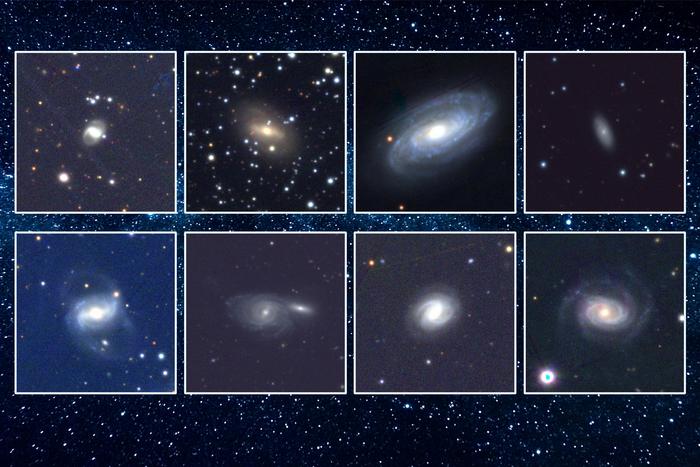
Astronomers spot 18 black holes gobbling up nearby stars
The detections more than double the number of known tidal disruption events in the nearby universe.
‘Old smokers’ and ‘squalling newborns’ among hidden stars spotted for first time
‘Hidden’ stars including a new type of elderly giant nicknamed an ‘old smoker’ have been spotted for the first time by astronomers.
Exploding stars
Search for witnesses of near-Earth astrophysical events
Finding explanation for Milky Way’s warp
The Milky Way is often depicted as a flat, spinning disk of dust, gas, and stars. But if you could zoom out and take an edge-on photo, it actually has a distinctive warp — as if you tried to twist and bend a vinyl LP.
Astronomers discover first step toward planet formation
Astronomers have gotten very good at spotting the signs of planet formation around stars. But for a complete understanding of planet formation, we also need to study examples where planet formation has not yet started.
The CSU’s Path to Carbon Neutrality
Determined to combat climate change and promote sustainability, the CSU progresses toward the goal of being carbon neutral by 2045.
Astronomers use novel technique to find starspots
Astronomers have developed a powerful technique for identifying starspots, according to research presented this month at the 241st meeting of the American Astronomical Society.
Stellar initial mass function varies with metallicity and age of stars
In the vast and diverse Universe, the initial mass distribution at the birth of a new population of stars determines the fate of galaxies.
How did the Butterfly Nebula get its wings? It’s complicated
Something is amiss in the Butterfly Nebula. When astronomers compared images from 2009 & 2020, they saw dramatic changes in its “wings.” Powerful winds are driving complex alterations of nebular material. It’s unknown how such activity is possible in what should be a “largely moribund star with no remaining fuel.”
Sudden Spin-down Event Illuminates Magnetar Mystery
A new paper published in Nature Astronomy is shedding light on magnetars, whose attributes remain poorly understood. A magnetar is a type of neutron star with an extremely strong magnetic field that rotates once every two to ten seconds. Researchers…

Old and new stars paint very different pictures of the Triangulum Galaxy
Scientists have discovered something unexpected about the Triangulum galaxy: In this satellite galaxy, a close companion of the much larger Andromeda galaxy, old and new stars occur in separate parts of the its structure, something not seen in galaxies like our own and so far not reporter for other satellite galaxies.
The seven-year photobomb: Distant star’s dimming was likely a ‘dusty’ companion getting in the way, astronomers say
Astronomers discovered that the star Gaia17bpp gradually brightened over a 2 1/2-year period. But follow-up analyses revealed that the star itself wasn’t changing. Instead, it’s likely part of a rare type of binary system. Its apparent brightening was the end of a years-long eclipse by an unusual, “dusty” stellar companion.
Shift to ultraviolet-driven chemistry in planet-forming disks marks beginning of late-stage planet formation
The chemistry of planet formation has fascinated researchers for decades because the chemical reservoir in protoplanetary discs—the dust and gas from which planets form—directly impacts planet composition and potential for life.
Researchers spot rare luminous jet spewed by supermassive black hole
A University of Minnesota Twin Cities assistant professor is co-leading a team that discovered a bright optical flare which may help researchers better understand the physics of supermassive black holes billions of light years away.
ZTF makes first discovery of a rare cosmic “lunch”
The universe can be a violent place. Stars die or collide with each other and black holes devour everything that gets too close.
Astronomers create new technique to assist in search for dark matter
Meteors may help astronomers devise a new way to locate dark matter – mysterious and invisible particles that have so far only been discerned by the effect they have on the natural world.
Scientists on the Hunt for Planetary Formation Fossils Reveal Unexpected Eccentricities in Nearby Debris Disk
Using the Atacama Large Millimeter/submillimeter Array (ALMA), astronomers have imaged the debris disk of the nearby star HD 53143 at millimeter wavelengths for the first time, and it looks nothing like they expected. Based on early coronagraphic data, scientists expected ALMA to confirm the debris disk as a face-on ring peppered with clumps of dust. Instead, the observations took a surprise turn, revealing the most complicated and eccentric debris disk observed to date.
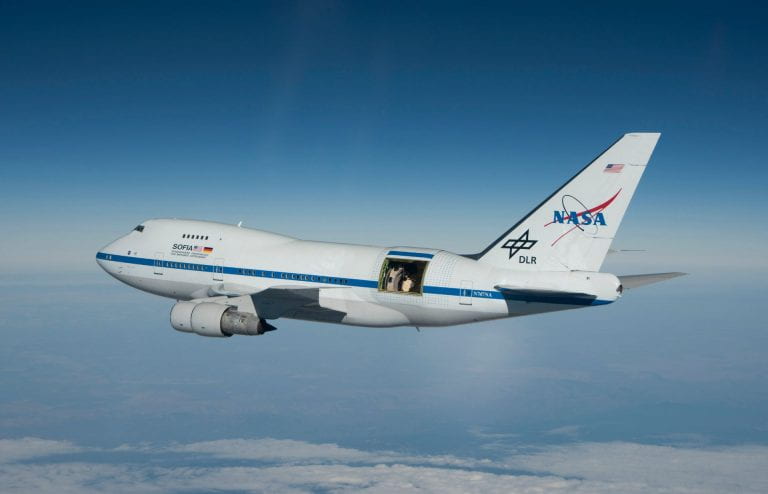
UCI-led astronomy team finds evidence of galactic metal shrouded in dust
A thorough understanding of galaxy evolution depends in part on an accurate measurement of the abundance of metals in the intergalactic medium – the space between stars – but dust can impede observations in optical wavelengths.
Hubble Celebrates Halloween With A Glowering, Dying Star
Hubble celebrates Halloween with a striking view of the aging red giant star CW Leonis. The orange-red cobweb-like shells are dusty clouds of sooty carbon engulfing the dying star. Bright searchlight beams poke through the dust.
Probing Deeper into Origins of Cosmic Rays
Researchers know cosmic rays originate from the multitude of stars in the Milky Way and other galaxies. The difficulty is tracing the particles to specific sources, because the turbulence of interstellar gas, plasma, and dust causes them to scatter and rescatter in different directions. In AIP Advances, researchers developed a simulation model to better understand these and other cosmic ray transport characteristics, with the goal of developing algorithms to enhance existing detection techniques.
36 Dwarf Galaxies Had Simultaneous “Baby Boom” of New Stars
Three dozen dwarf galaxies far from each other had a simultaneous “baby boom” of new stars, an unexpected discovery that challenges current theories on how galaxies grow and may enhance our understanding of the universe. Galaxies more than 1 million light-years apart should have completely independent lives in terms of when they give birth to new stars. But galaxies separated by up to 13 million light-years slowed down and then simultaneously accelerated their birth rate of stars, according to a Rutgers-led study published in the Astrophysical Journal.
Rutgers Expert Available to Discuss Supernova Discovery
New Brunswick, N.J. (April 21, 2021) – Rutgers University–New Brunswick astrophysicist John P. (Jack) Hughes is available for interviews on a supernova (exploding star) discovery published today in the journal Nature. The discovery, made with NASA’s Chandra X-ray Observatory, features…
Rutgers Expert Available to Discuss James Webb Space Telescope Science
New Brunswick, N.J. (Feb. 22, 2021) – Rutgers University–New Brunswick Professor Kristen McQuinn is available for interviews on the upcoming launch of the James Webb Space Telescope, its potential scientific impact and the leap forward it will provide in our understanding of the…
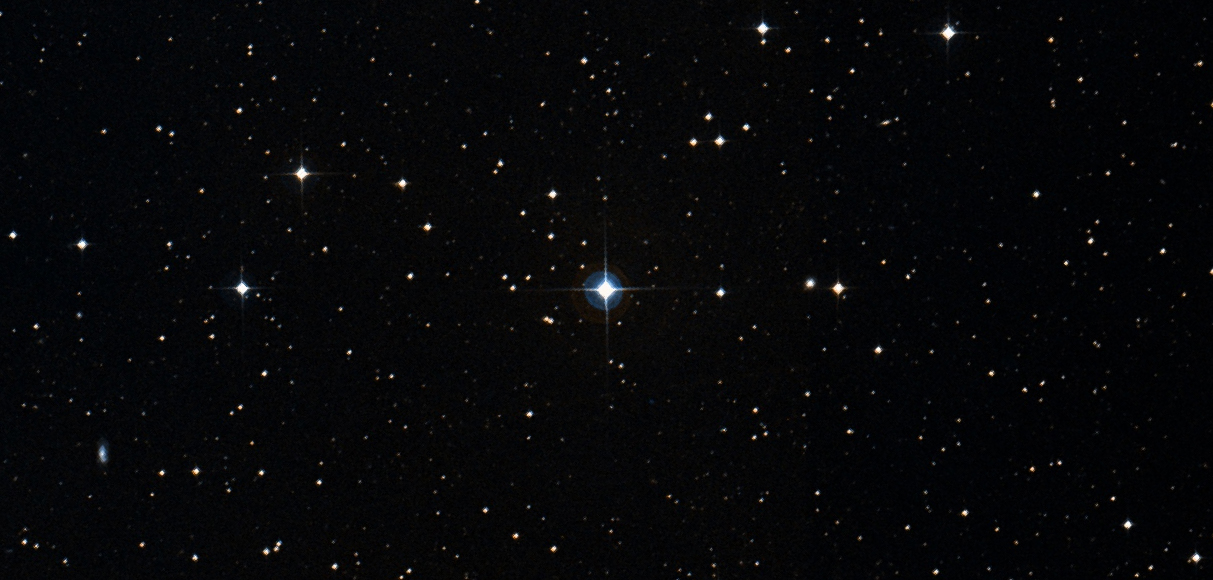
Astronomers document the rise and fall of a rarely observed stellar dance
Astronomers have catalogued 126 years of changes to HS Hydra, a rare evolving eclipsing binary. The two stars in HS Hydra began to eclipse each other starting around a century ago, peaking in the 1960s. The degree of eclipsing then plummeted over the course of just a half century, and will cease around Feb. 2021.
Expert: What is the Great Conjunction?
Contact: Kim Ward, University Communications: (517) 432-0117, [email protected], Zach Richardson, University Communications: (517) 281-5786, [email protected].
Dec. 16, 2020
Ask the Expert: The Great Conjunction
EAST LANSING, Mich. – As the world continues to turn during the COVID-19 pandemic, many of us are settling in for a holiday season unlike any other in recent memory. One that, on its face, seems to lack the usual magic of holidays in the past. That would be the case, if not for the once-in-a-lifetime Great Conjunction that will occur on Dec. 21. A Great Conjunction that many are calling the “Christmas Star.” Shannon Schmoll, director of the Abrams Planetarium at Michigan State University, offers her insight on the astronomical event that will be sure to brighten the holidays.
What is a conjunction? Or what qualifies something as a conjunction?
A conjunction at its most basic is when two objects, such as planets, pass each other in the sky. The more specific answer, h
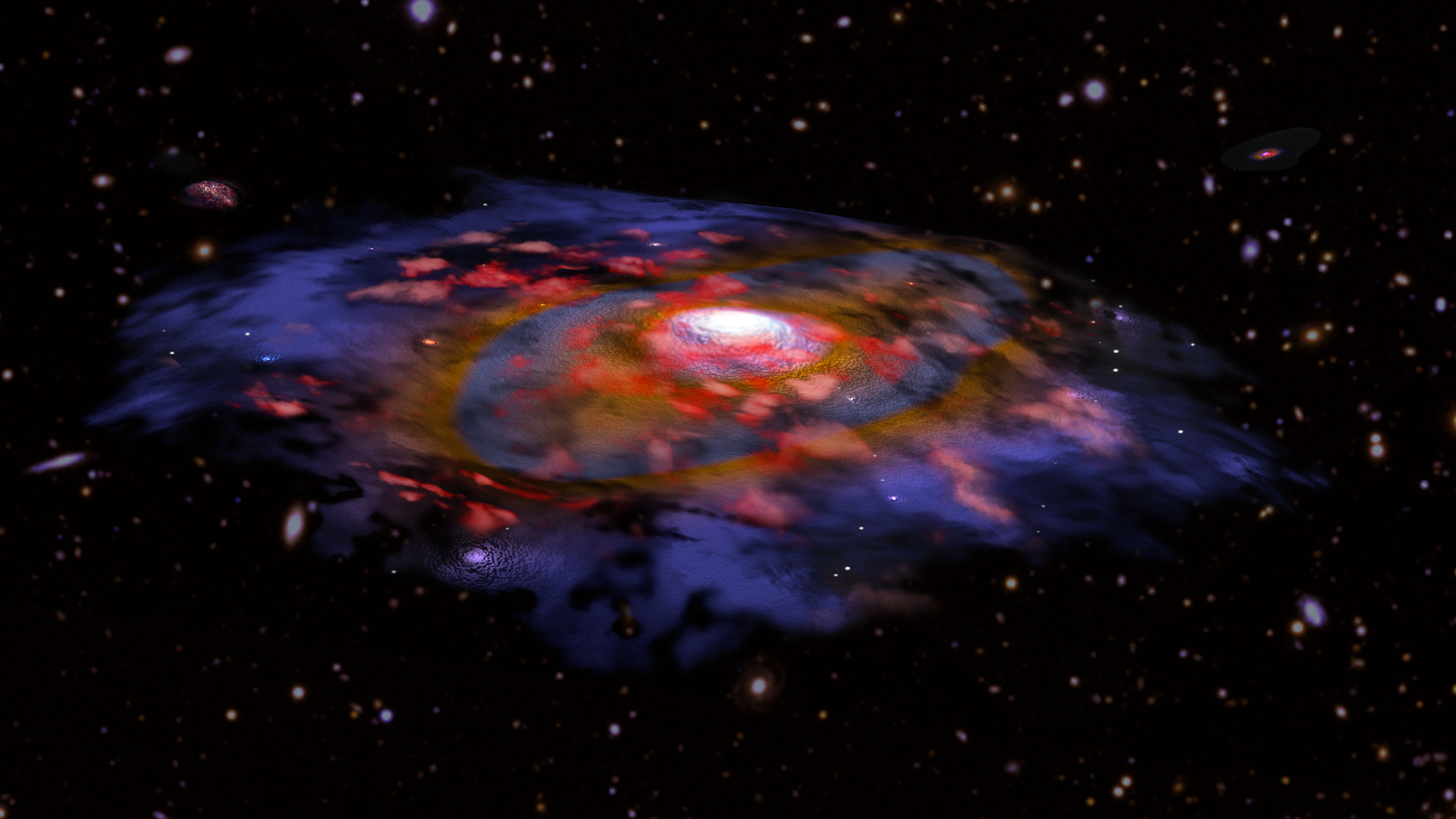
Galaxies in the Infant Universe Were Surprisingly Mature
ALMA telescope conducts largest survey yet of distant galaxies in the early universe
Rutgers Astronomer Receives Packard Fellowship for Innovative Young Scientists
New Brunswick, N.J. (Oct. 15, 2020) – Blakesley Burkhart’s childhood days spent volunteering at a science museum and watching the Discovery Channel and sci-fi shows sparked her love of science and fascination with the stars. “These were the beginning years…
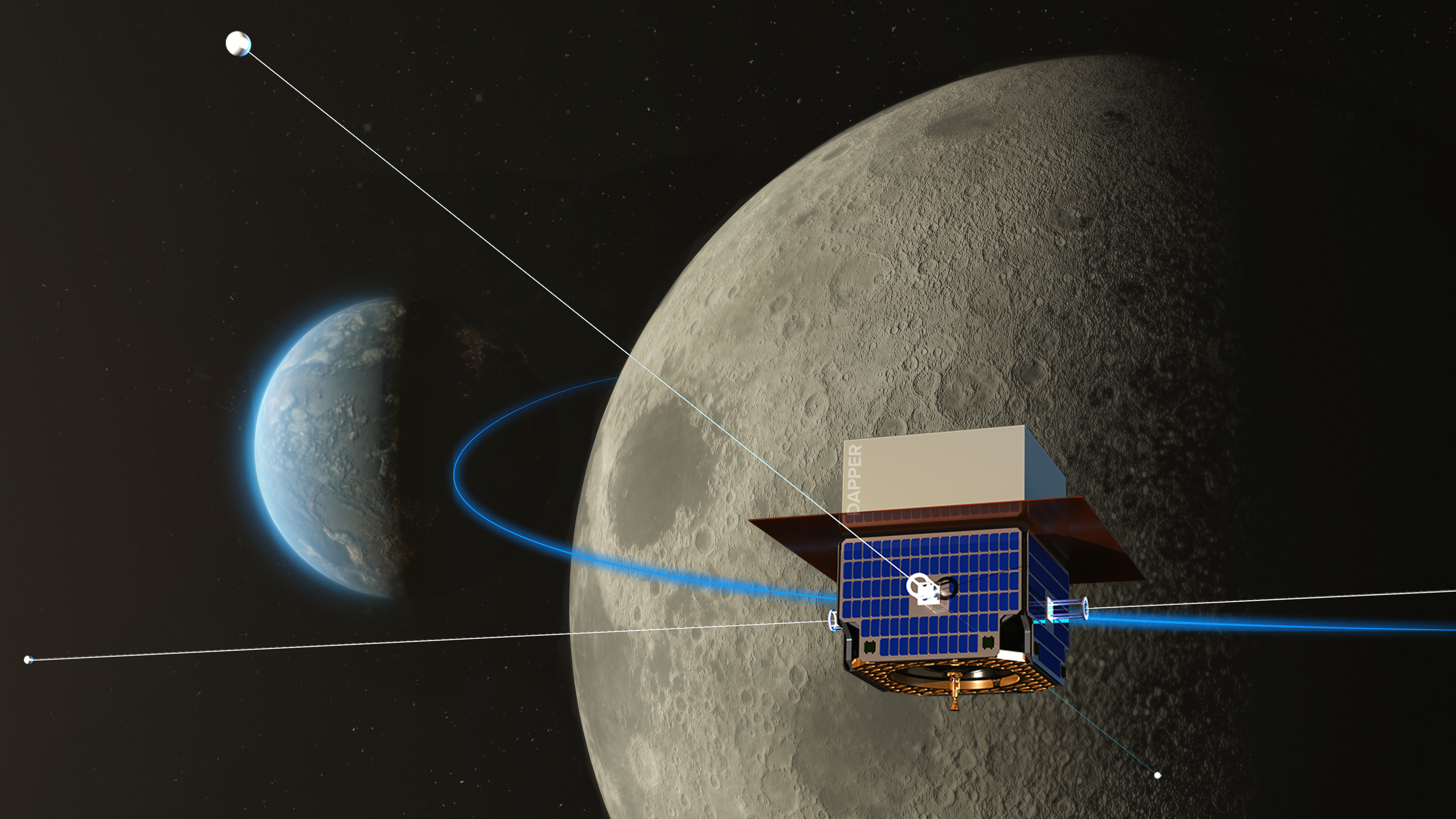
NRAO Joins Space Mission to the Far Side of the Moon to Explore the Early Universe
The NRAO has joined a new NASA space mission to the far side of the Moon to investigate when the first stars began to form in the early universe.
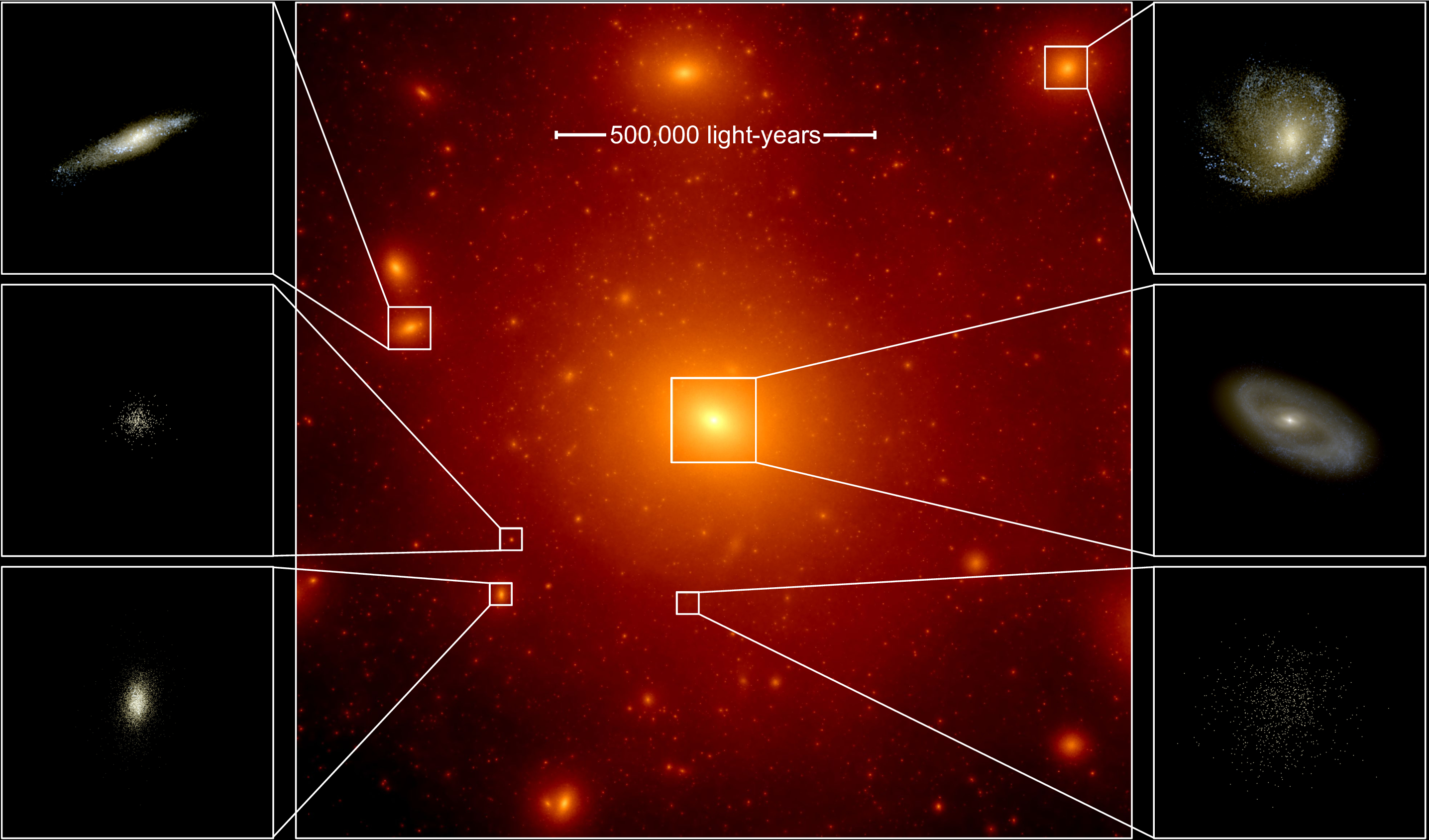
Galaxy Simulations Could Help Reveal Origins of Milky Way
Rutgers astronomers have produced the most advanced galaxy simulations of their kind, which could help reveal the origins of the Milky Way and dozens of small neighboring dwarf galaxies. Their research also could aid the decades-old search for dark matter, which fills an estimated 27 percent of the universe. And the computer simulations of “ultra-faint” dwarf galaxies could help shed light on how the first stars formed in the universe.
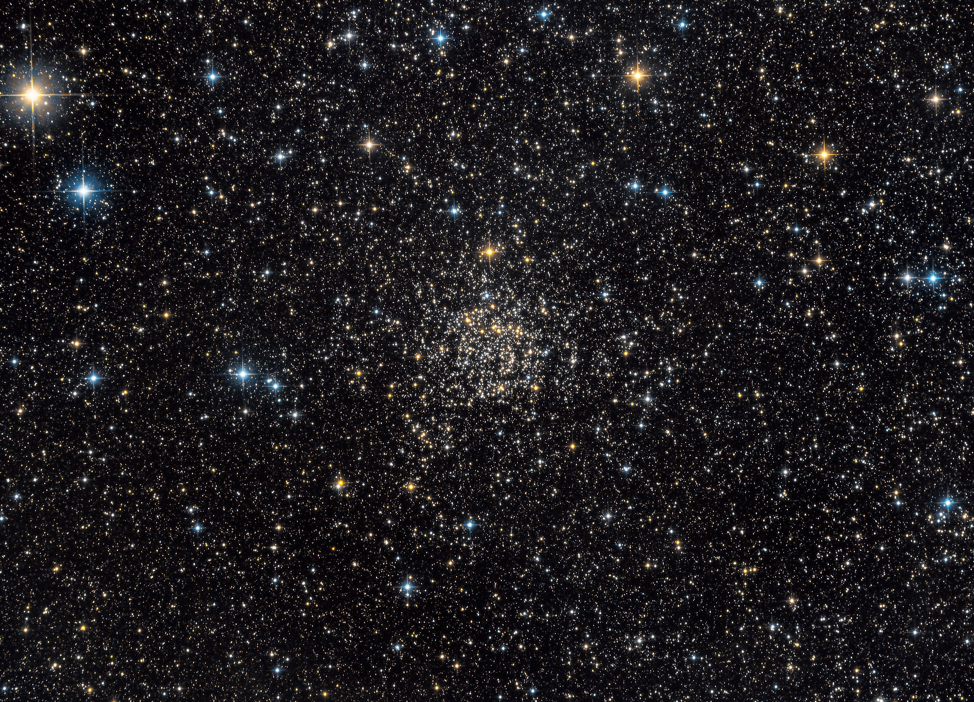
Study: Dying Stars Breathe Life Into Earth
As dying stars take their final few breaths of life, they gently sprinkle their ashes into the cosmos through the magnificent planetary nebulae. These ashes, spread via stellar winds, are enriched with many different chemical elements, including carbon.
Findings from a study published today in Nature Astronomy show that the final breaths of these dying stars, called white dwarfs, shed light on carbon’s origin in the Milky Way.
Astronomers Find Elusive Target Hiding Behind Dust
In some pairs of young stars, astronomers found a “hot corino” of organic molecules around one, but not the other. Researchers studied such a pair with the VLA at radio wavelengths that readily pass through dust, and found the other one.

Upcoming Trimble Lecture with Elizabeth Kessler Highlights the Impacts of Hubble Imagery on May 7
The American Institute of Physics, celebrating the 30th anniversary of the launch of the NASA/ESA Hubble Space Telescope, is delighted to host a virtual presentation by Stanford University’s Elizabeth Kessler in an upcoming Lyne Starling Trimble Science Heritage Public Lecture. The lecture series is presented by AIP and features science historians and writers who study the role of science and technology in modern society and culture. “Hubble Space Telescope Images and the Astronomical Sublime” will be hosted virtually, Thursday, May 7 at 3:30 p.m. Eastern (U.S.).
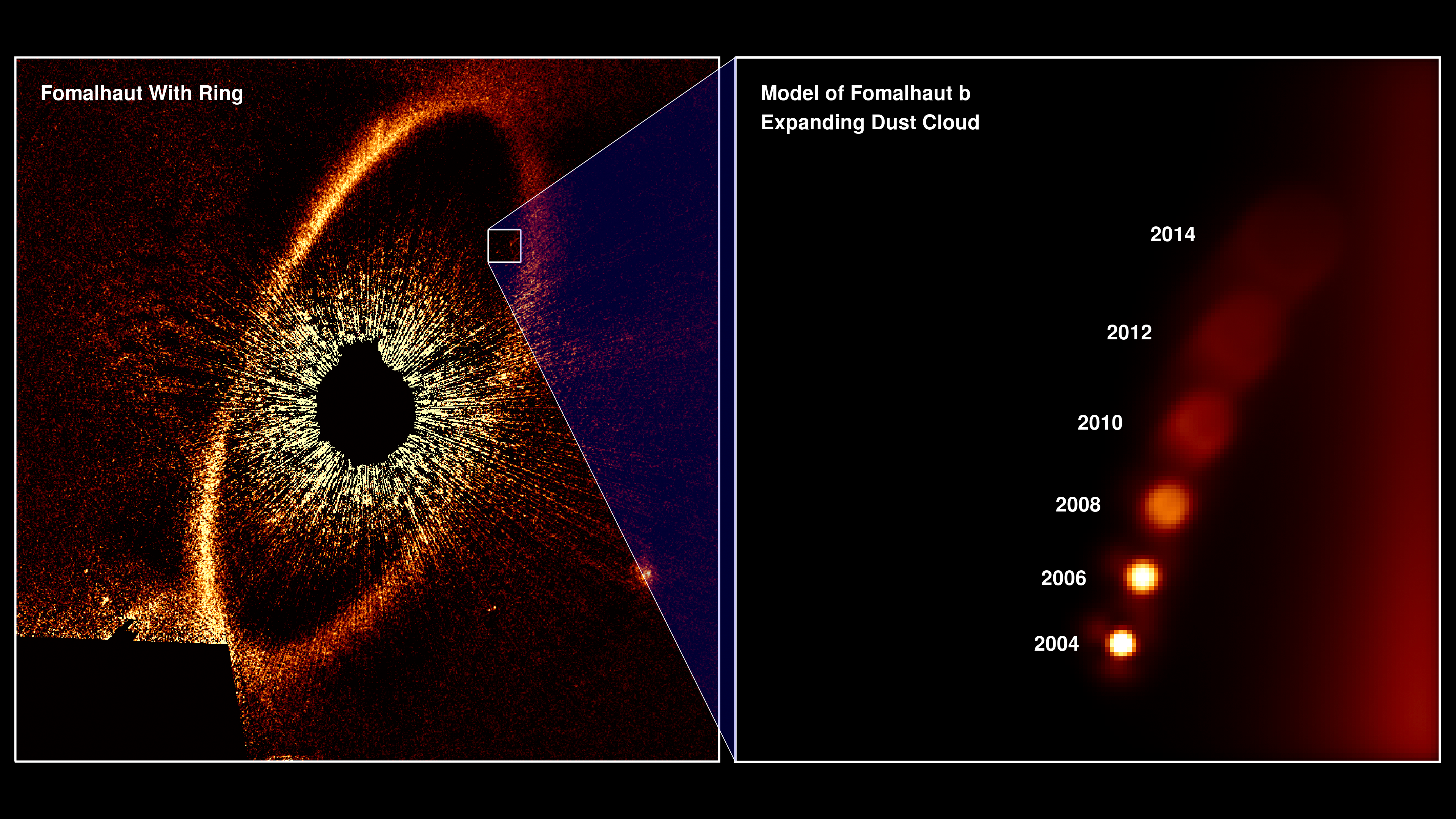
Extrasolar Planet Apparently Disappears in Latest Hubble Observations
Astronomers using the Hubble Space Telescope have come to the jaw-dropping conclusion that a planet orbiting another star has seemingly disappeared after appearing in several years’ worth of Hubble images. A team of astronomers from the University of Arizona believe this is forensic evidence of a titanic collision between two asteroid-sized bodies orbiting a nearby star, Fomalhaut.
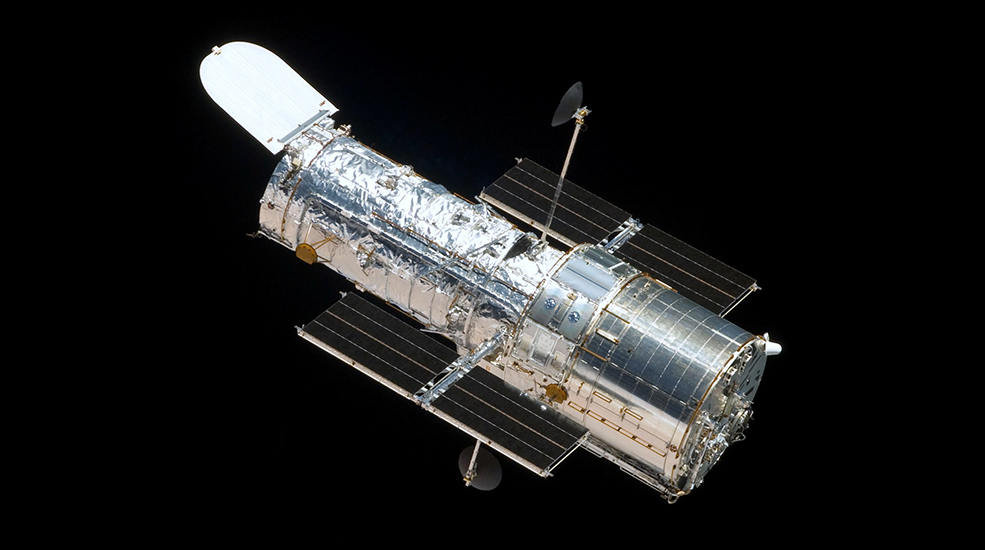
Celebrating 30 Years of Hubble: Discoveries Continue to Wow Scientists, Public
Peering into the darkness to see what we could not previously see, the Hubble Space Telescope has been delighting scientists and the general public with revealing details and images of galaxies and celestial phenomena. The American Institute of Physics recognizes and celebrates the momentous occasion of the 30th anniversary of its launch and Physics Today is highlighting the anniversary in its April issue with a look back at the history of the telescope and analysis of Hubble’s discoveries over the past 30 years.
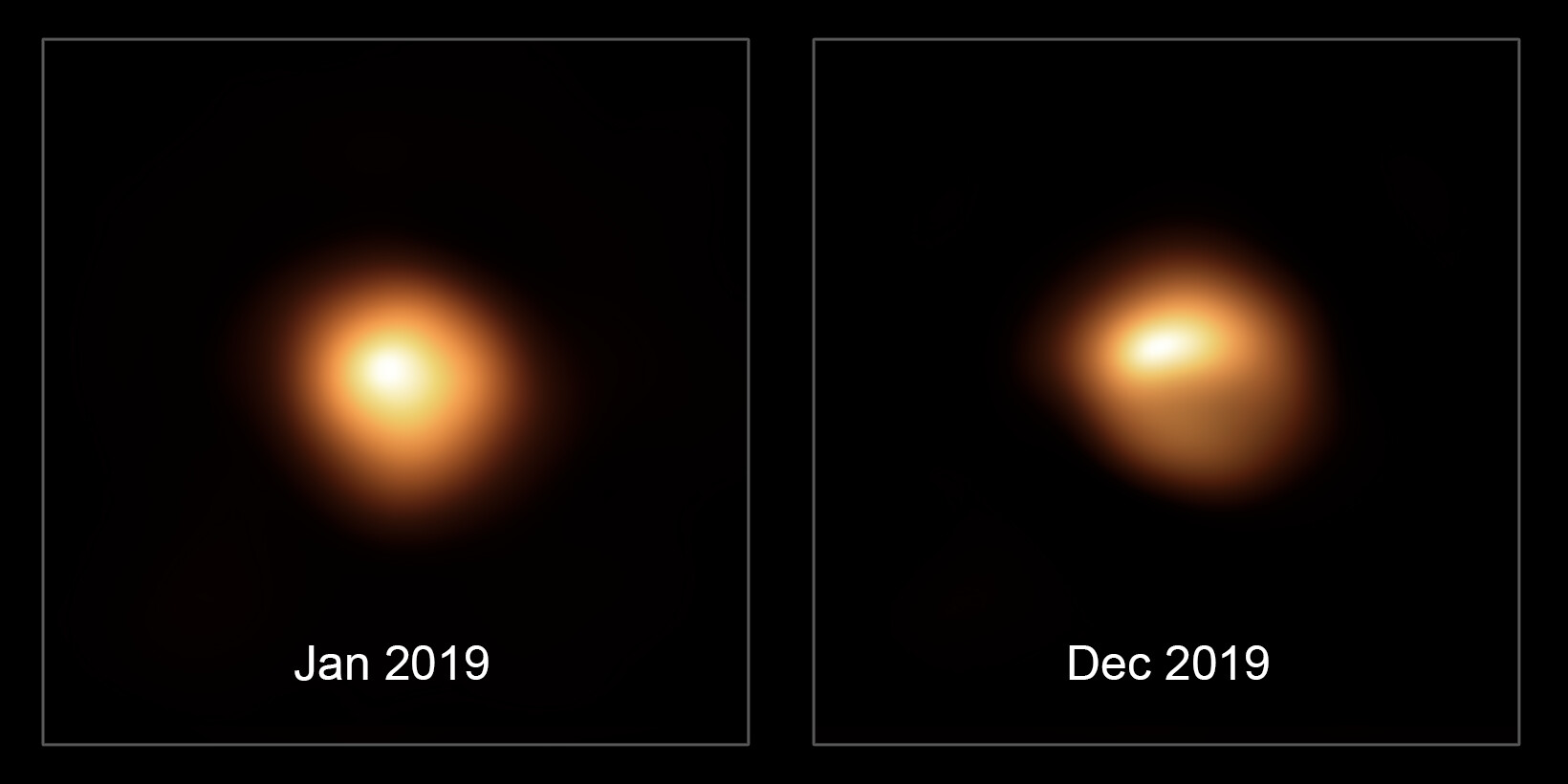
Dimming Betelgeuse likely isn’t cold, just dusty, new study shows
Scientists at the University of Washington and Lowell Observatory report that Betelgeuse is significantly warmer than expected if its recent dimming had been triggered by cooling of the star’s surface. This may indicate that Betelgeuse instead sloughed off material from its outer layers.
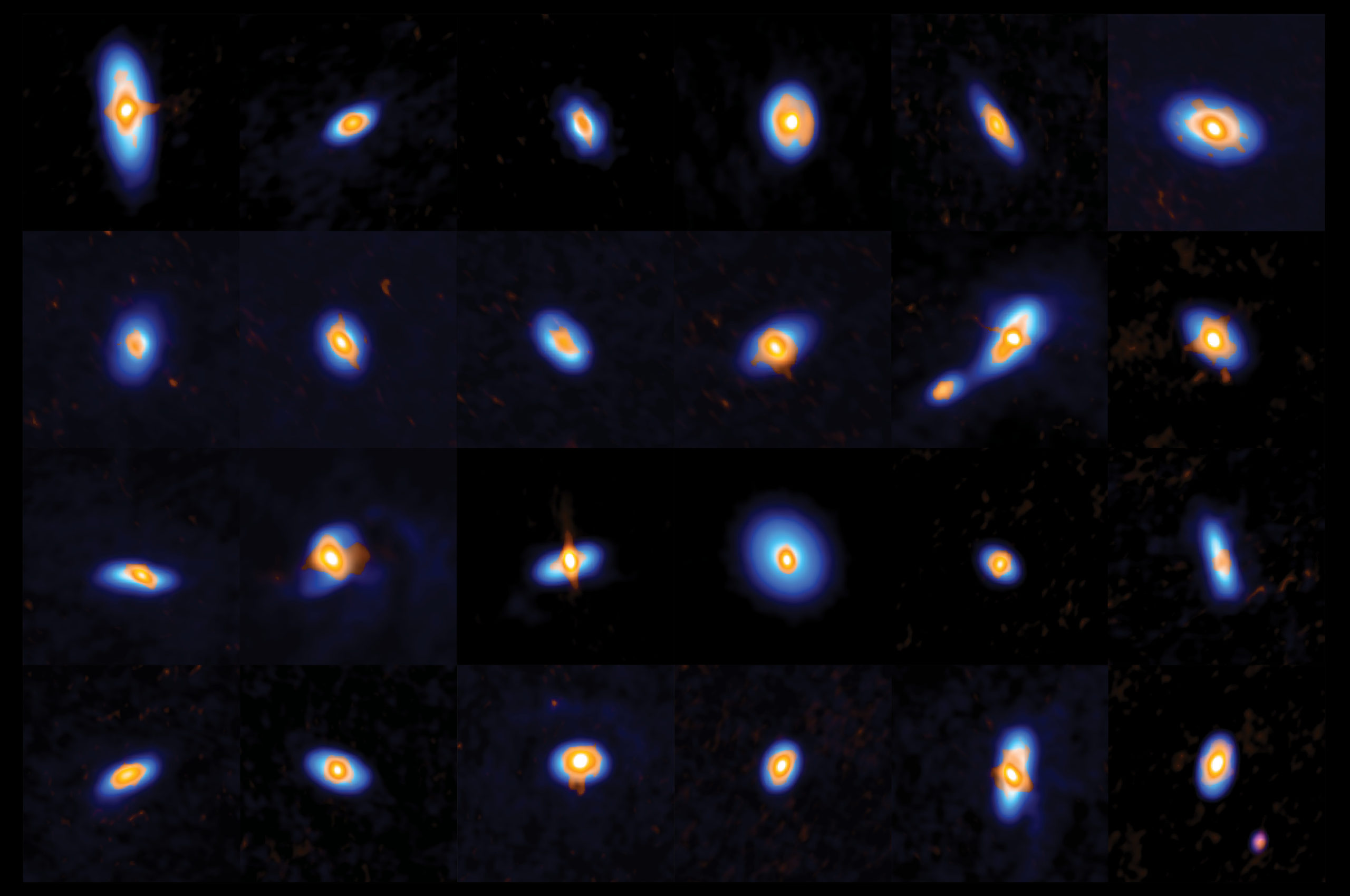
How Newborn Stars Prepare for the Birth of Planets
An international team of astronomers used two of the most powerful radio telescopes in the world to create more than three hundred images of planet-forming disks around very young stars in the Orion Clouds. These images reveal new details about the birthplaces of planets and the earliest stages of star formation.
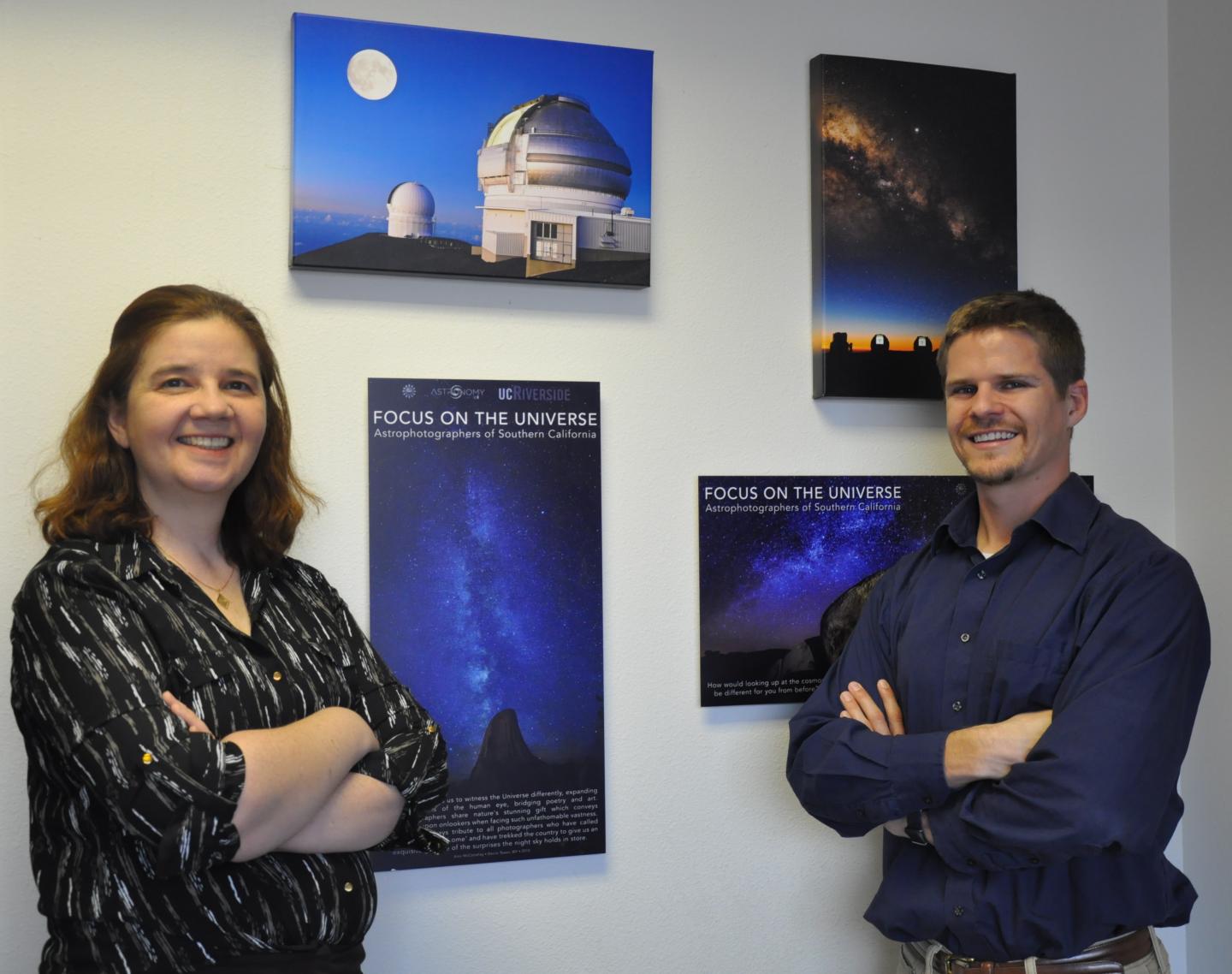
Astronomers discover unusual monster galaxy in the very early universe
An international team of astronomers led by scientists at the University of California, Riverside, has found an unusual monster galaxy that existed about 12 billion years ago, when the universe was only 1.8 billion years old.
ASU-led NASA Psyche mission offers free online course on team building from leadership experts
The new Psyche Mission Innovation Toolkit online course is designed to help learners understand the unique challenges of a diverse team and provides tools to help address these challenges and take actions to be more successful in working with others. Image by ASU Continuing and Professional Education

Goldilocks Stars Are Best Places to Look for Life
Hubble observations suggest that orange stars, slightly cooler than our Sun, are better hangouts for life. There are more of them in our galaxy, they live much longer than our Sun, and unleash less deadly radiation than red dwarf stars.
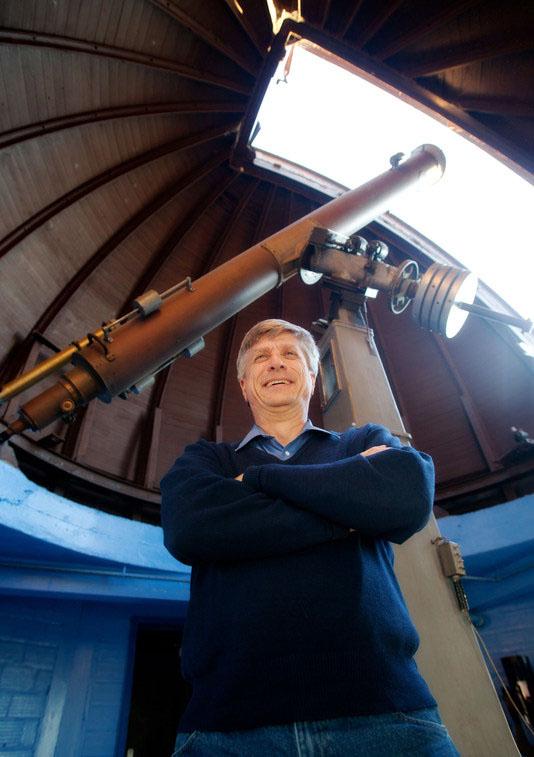
Binary star V Sagittae will explode as a very bright ‘nova’ by century’s end
Currently, the faint star V Sagittae, V Sge, in the constellation Sagitta, is barely visible, even in mid-sized telescopes. However, around the year 2083, this innocent star will explode, becoming as bright as Sirius, the brightest star visible in the night sky.
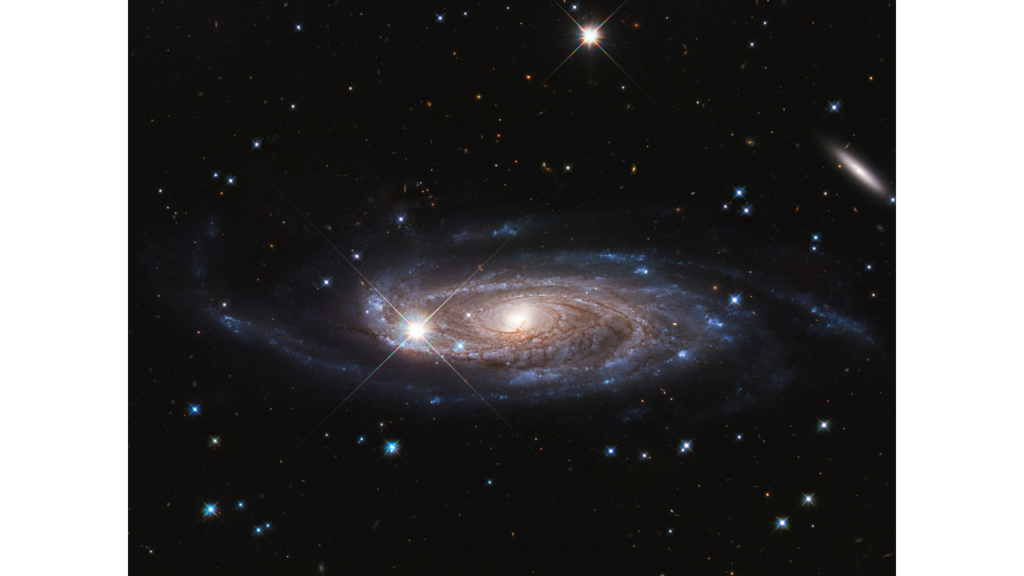
NASA’s Hubble Surveys Gigantic Galaxy
Hubble has photographed a majestic spiral galaxy, UGC 2885, located 232 million light-years away. The galaxy is 2.5 times wider than our Milky Way and contains 10 times as many stars. Astronomers want to know how it got so big.
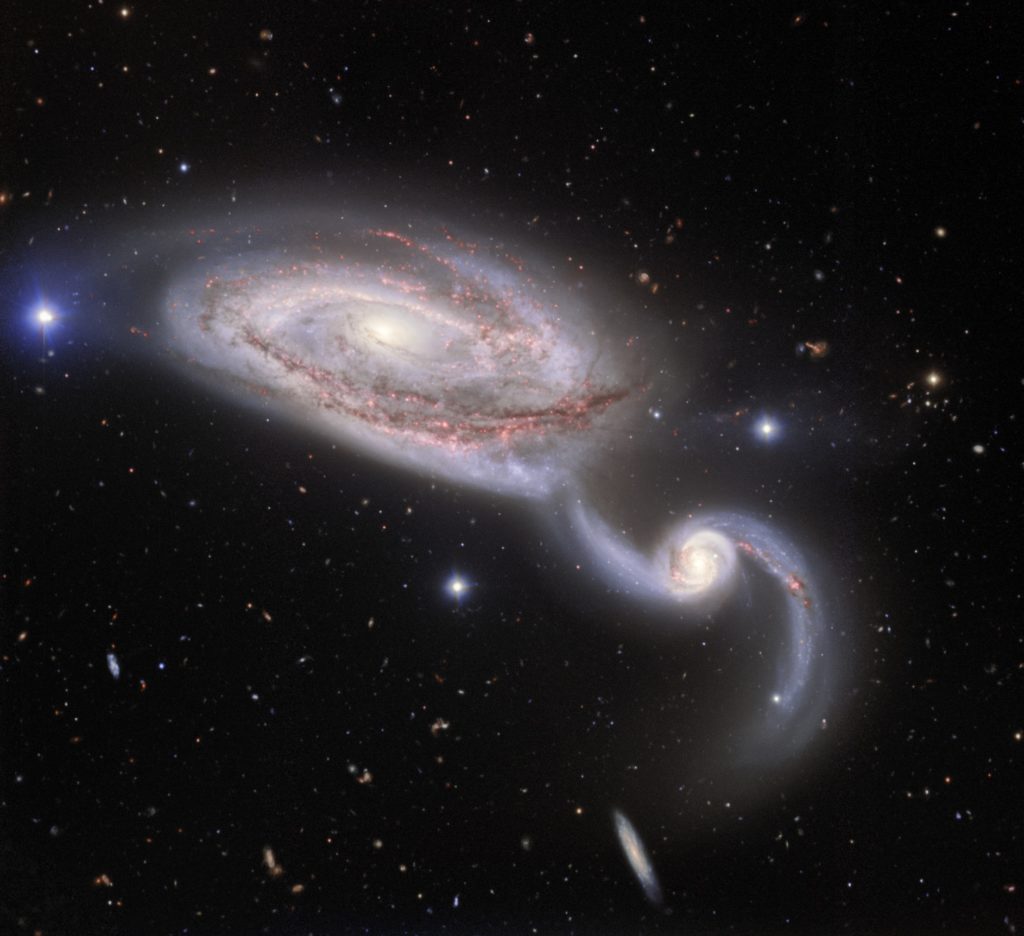
A Galactic Dance
Galaxies lead a graceful existence on cosmic timescales. Over millions of years, they can engage in elaborate dances that produce some of Nature’s most exquisite and striking grand designs. Few are as captivating as the galactic duo known as NGC 5394/5, sometimes nicknamed the Heron Galaxy. This image, obtained by the Gemini Observatory of NSF’s National Optical-Infrared Astronomy Research Laboratory, captures a snapshot of this compelling interacting pair.

A Galactic Dance
Galaxies lead a graceful existence on cosmic timescales. Over millions of years, they can engage in elaborate dances that produce some of Nature’s most exquisite and striking grand designs. Few are as captivating as the galactic duo known as NGC 5394/5, sometimes nicknamed the Heron Galaxy. This image, obtained by the Gemini Observatory of NSF’s National Optical-Infrared Astronomy Research Laboratory, captures a snapshot of this compelling interacting pair.